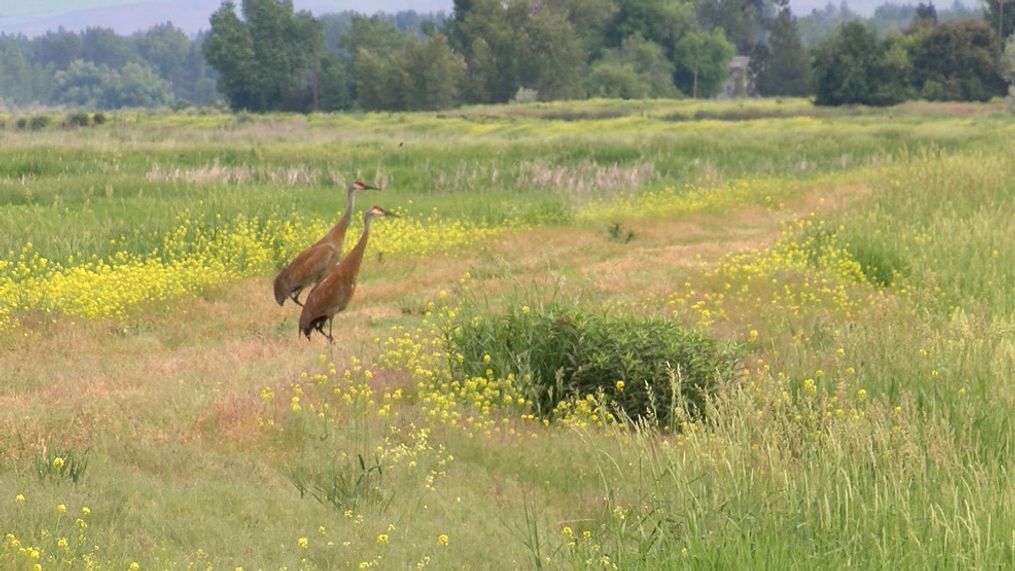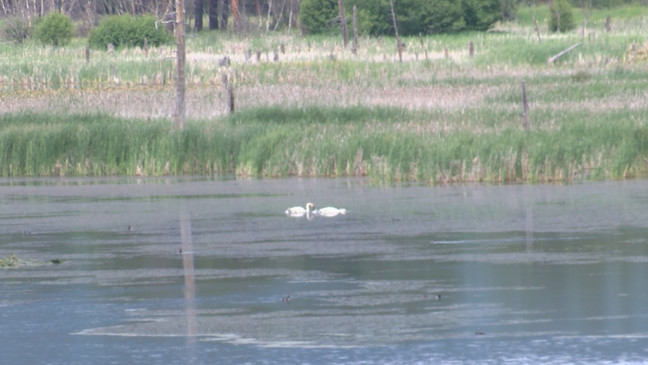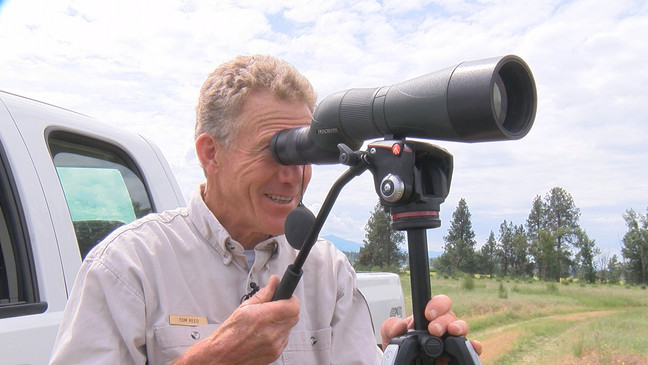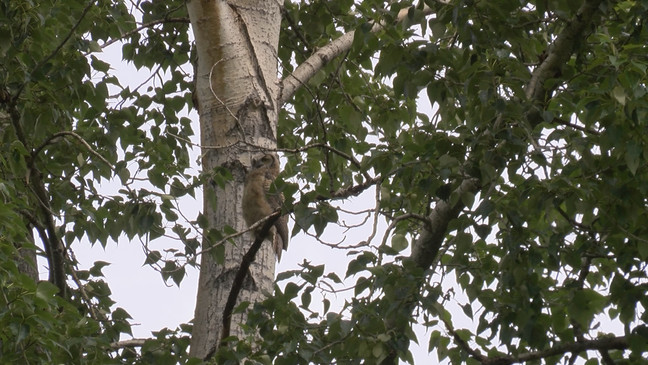Season welcomes new youngsters to Lee Metcalf National Wildlife Refuge
STEVENSVILLE, Mont. — For several years now, a Trumpeter Swan pair has successfully raised clutches at Lee Metcalf National Wildlife Refuge.
Before that, Trumpeter Swans were only known to migrate through Metcalf.
So, it's a big deal the pair is once again nurturing young at the refuge in 2023.
Refuge manager Tom Reed took NBC Montana to see the family.
On Pond 10, on the north end of Lee Metcalf, you can see mom and dad with their youngsters.
But to ensure they are not disturbed we don't get too close.
“This is the fifth year in a row that they’ve pulled off a brood," said Tom. "It’s the third year in a row that they’ve had six cygnets.”
Tom has been documenting this pair since they had their first brood of two cygnets five years ago.
“Five years ago, I was ecstatic," he said. "This year I’m just as ecstatic.”
Last year, he said two of six cygnets died of Avian Influenza and a third died as well.
He's hopeful that all six of this year's cygnets "will make it."
Their parents are giving the new brood a good start by stirring up essential protein the young will need to survive.
"They're stirring up submergent aquatic vegetation," said Tom. "They're stirring it up with their legs and pulling it up with their bills, and the young cygnets are pulling the invertebrates out of the vegetation."
To help the swans out Tom keeps close watch on the pond's depth.
Spring runoff is flowing into the pond.
He removes a board from the head gate to let some of that water out.
It's an effort to make sure that submergent vegetation is more accessible to the young.
"We're trying," he said, " to make sure it's a steady or slightly decreased water column for the next three or four weeks."
There is plenty of water at the refuge and lots of new life.
For weeks, waterfowl of many species have been using Lee Metcalf for the refuge it is.”
“We’ve got young popping out everywhere," said Tom.
But they're hard to see.
Parents are in protective mode.
Tom takes us to a part of the refuge where a pair of Sandhill cranes are keeping watch of the young that are hidden somewhere in the grass.
He listed other new broods, including "Common Goldeneye, Widgeon, Gadwall and Wood ducks broods."
We saw a Great Horned owl camouflaged in a cottonwood tree.
We saw an Osprey on her nest.
“This one’s sitting really tight," he said. " I think she’s probably got eggs that will hatch soon.”
On another part of the refuge Tom took us to an eroded bank off a slough of the Bitterroot River.
Here, hundreds of Bank swallows feed and nest. They are taking advantage of two habitat types-the bank for nesting, and the river where insects are plentiful.
We saw pelicans crowding a little island.
Tom said it's a good fishing spot.
“It’s a nice little island," said Tom, " a good loafing spot for whoever gets there first.”
This time of year the refuge is lush with greenery.
On the north end of the refuge Tom drove through "a rich habitat area with multiple tree and shrub canopies."
"It's really good song bird habitat," he said.
To protect migratory species some of the refuge is off limits to the public.
But much of it is not.
A Great Blue heron stands prominently just outside the refuge office.
Tom said the bird has probably found a good place to hunt Columbian ground squirrels.
“Everything is pulling off whatever progeny they can make a living doing," said Tom.
At 2,800 acres, the refuge is home to an especially wide variety of waterfowl and song bird species.
He said the Bitterroot Mountains to the west, the Sapphire Mountains to the east, the valley floor and the Bitterroot River are part of a topography that plays a part in that diversity.
"They're all kind of smashed together," he said. "You have a lot of different habitat niches in a small area."
At Lee Metcalf you get a bird's eye view of changing weather.
June is filled with thunderstorms.
On one such evening lightning promised a show and delivered in dramatic fashion.
The wind blew hard and rain pummeled the ponds.
But it passed quickly and calmed down.
Rain or shine it's all good weather for ducks.



